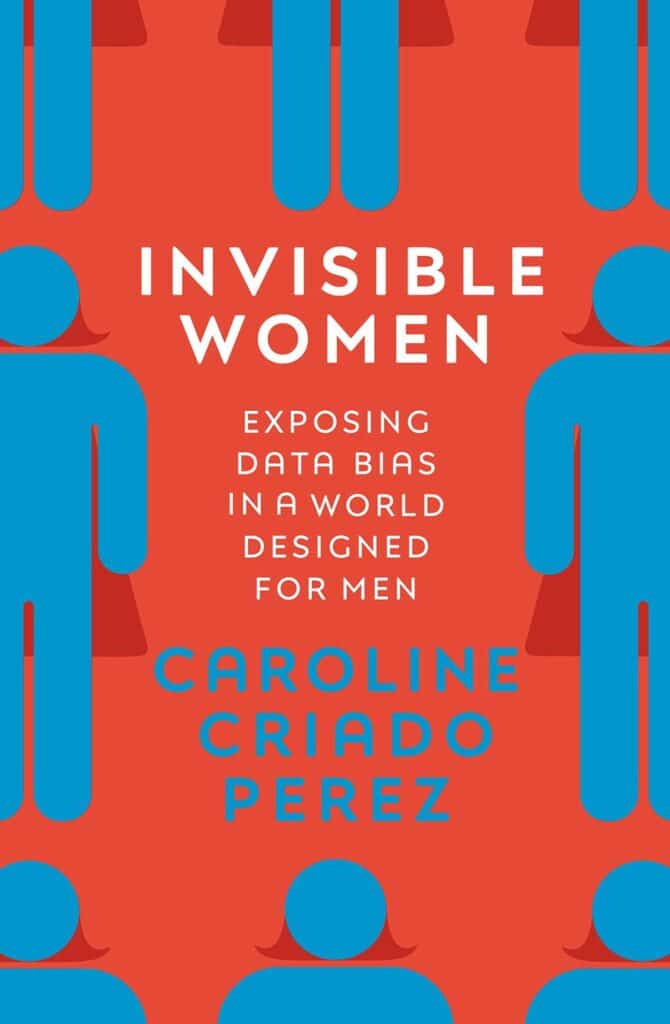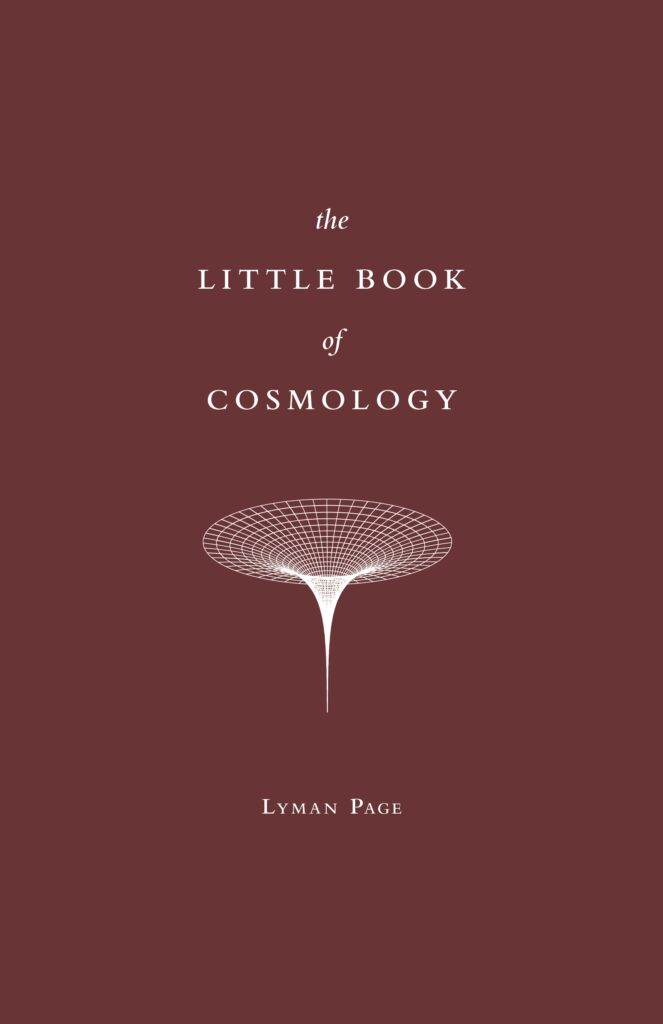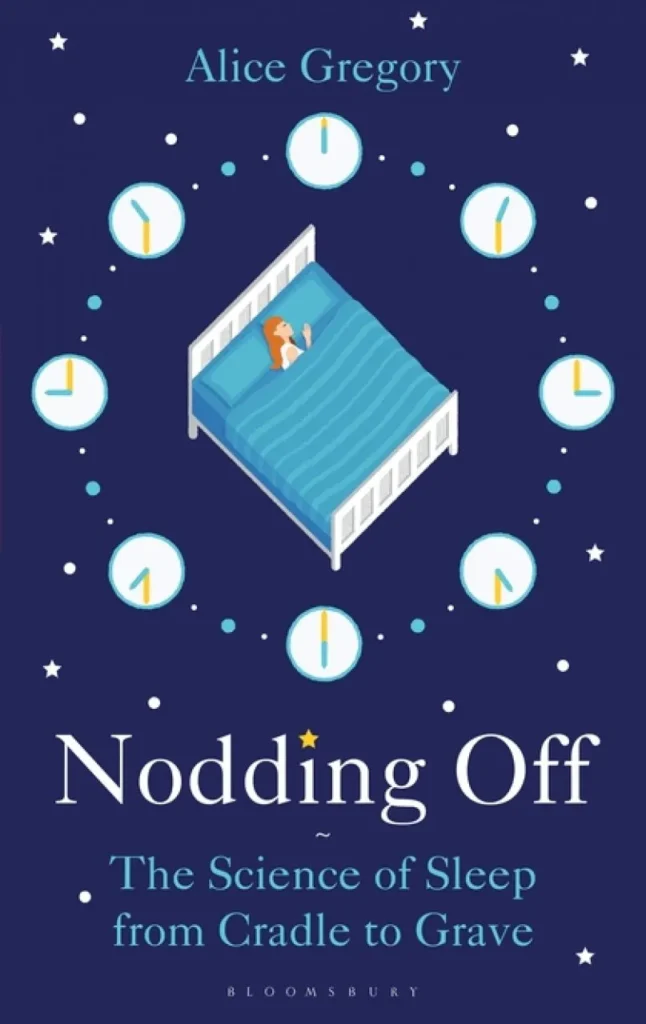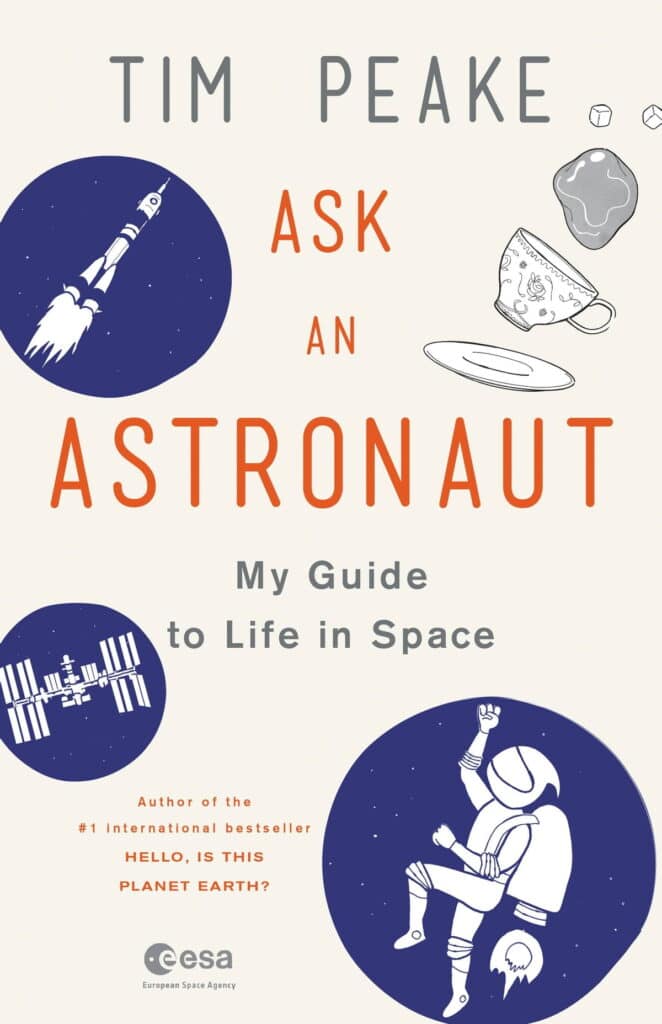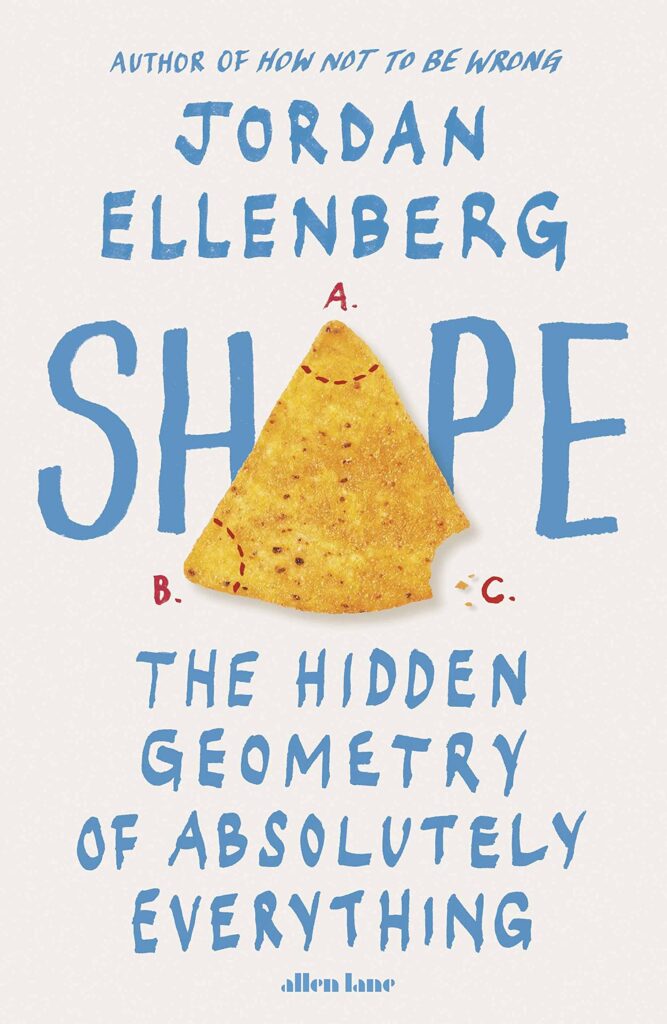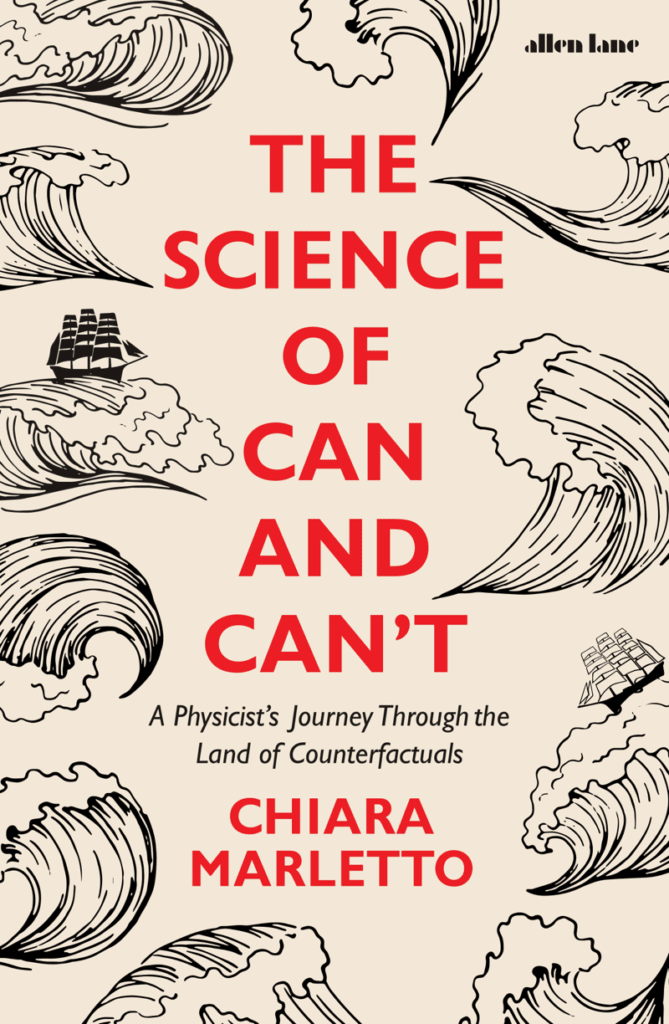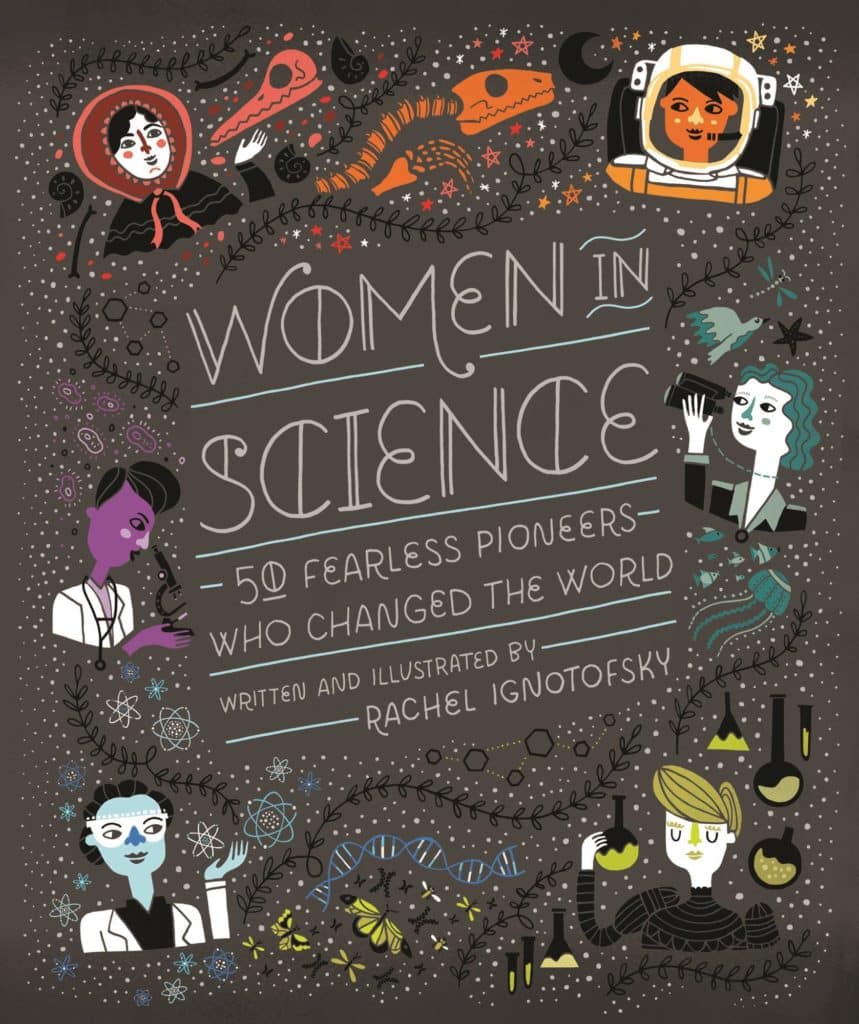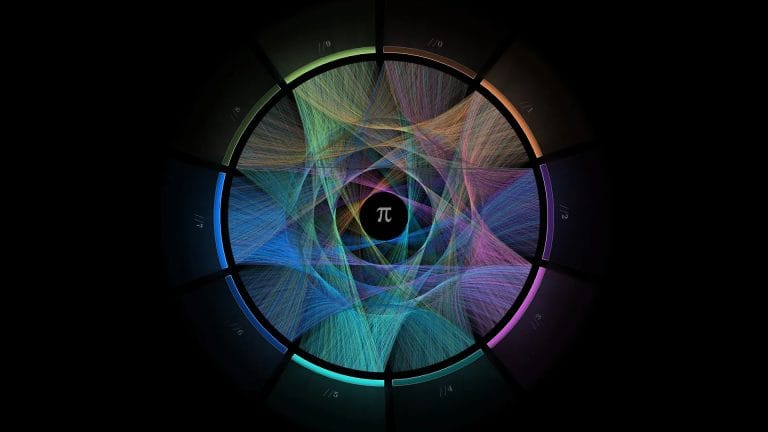Whether you’re a science enthusiast or just have a curious mind, reading science books can be an invaluable resource for learning about the world around us. A good science book will not only give you interesting facts and figures but also help you to look at the world from a different perspective. From archaeology to cosmology, you’ll come away with a brand new outlook on life after reading a good science book.
Almost every week, so many new science books are getting published. I did a lot of research, asked some good science people, and then picked 24 science books for myself and for you to read in 2024. And I finished some of them already, and I hope you also enjoy reading them.
Science Books Help Us Learn About the World Around Us
Science books are great for those who want to learn more about the world around them. From health and psychology to geometry and quantum physics, there are sure to be plenty of new topics to explore in any given book. You can also learn about more light-hearted subjects like food science and wildlife know-how. Regardless of your chosen topic, these books provide incredible insight into our universe that can help shape your worldview.
Understanding Our Place in the Natural World
Another great thing about science books is that they can help you re-evaluate humans’ place in the natural world. By understanding our role in nature, we can develop better relationships with other species and gain knowledge about how our actions affect our environment. Scientific discoveries and theories are constantly being made that challenge traditional values and beliefs; by engaging with scientific literature, we can stay informed on these developments and become more aware of our place in the natural world.
Science Books Show Us New Perspectives
The last thing that makes reading science books so beneficial is that it helps us gain new perspectives on life as we know it. A good cosmology book, for example, can take us back to the beginning of time and give us insights into how everything came together to create the universe as we know it today. Whether it’s understanding how galaxies were formed or discovering how matter behaves under certain conditions, these books offer knowledge that can open up new ways of thinking—and ultimately change your outlook on life itself!
Reading science books offers amazing benefits to those looking to learn more about the world around them or gain some new perspectives on life as they know it. From understanding more complex topics like quantum physics or geometry to exploring subjects like health and wildlife know-how, there’s sure to be something interesting in any given science book—and if nothing else, you’ll come away with an entirely different view of life itself! So why not grab yourself a good book today? You never know what kind of knowledge awaits you!
If you are interested in math, you can also check A Beautiful Mathematical Reading List for 2024
Before I get started, I would like to suggest Audible for those of us who are not the best at reading. Whether you are commuting to work, driving, or simply doing dishes at home, you can listen to these books at any time through Audible.

If you’re looking for an easy, soothing read about climate change to skim through before bed, this is not it. The Uninhabitable Earth by David Wallace-Wells is the literary equivalent of a bucket of ice water dumped over your head. It’s intense, brutally honest, and, frankly, terrifying—but also one of the most important books you’ll read if you care about the future of our planet (and, oh, I don’t know, basic survival).
Wallace-Wells starts off swinging, warning readers outright that what follows is not a “what if” scenario; it’s already happening. He relentlessly tackles the harsh realities of climate change, breaking down its terrifying consequences in no uncertain terms. Think sweltering heat waves, collapsing ecosystems, and rising seas, all woven together with unrelenting detail that makes you want to turn off your air conditioning and donate to every environmental nonprofit you can find by page 10.
What sets this book apart is how much it feels like a wake-up call. It doesn’t just throw facts at you (though there are plenty of those); it’s an impassioned plea for humanity to stop sleepwalking towards self-destruction. Wallace-Wells has a knack for bringing climate science to life with vivid storytelling and a healthy dose of urgency. At times, it feels like he’s grasping you by the shoulders, yelling, “DO SOMETHING BEFORE IT’S TOO LATE.” And honestly, we kind of need that right now.
But don’t despair entirely. While the book paints a dire picture, Wallace-Wells also manages to inject glimmers of hope. It’s like he understands that, at heart, we all need something positive to hold onto. He reminds us that while the clock is ticking, the power to take action and change our trajectory still exists. Think of it as an alarm clock—not a comforting lullaby, but a necessary jolt to force us out of complacency.
The most striking part, for me, was that by the time I finished the last page, I felt both deeply shaken and oddly inspired. After all, if a book can make you genuinely reconsider the consequences of every plastic bottle or forgotten light left on, that’s saying something. It’s not just a book; it’s a call to arms.
Yes, it’s scary—to the point where you might find yourself lying awake at night worrying about melting glaciers and the future of coral reefs. But it’s also one of those books that feels essential, like it should be handed out at schools, offices, libraries, and maybe even coffee shops (served with an eco-friendly bamboo straw, of course).
Whether you’re new to the conversation about climate change or you’ve been deep in it for years, The Uninhabitable Earth will challenge your understanding of the issue. Wallace-Wells doesn’t sugarcoat anything, but he also doesn’t leave you without a sliver of hope. And that’s the genius of the book. It’s terrifying, yes, but it’s also incredibly motivating.
If you’re ready to face hard truths and maybe (definitely) rethink your impact on the world, grab a copy. But fair warning, you’ll never look at your daily choices the same way again. And isn’t that the point?
The Creative Brain by Anna Abraham is a thought-provoking exploration into the complexities of human intelligence and creativity, making it a fascinating read for anyone questioning the very nature of their own abilities. The author’s style is approachable, inviting readers to ponder alongside her as she tackles intricate questions of brain function and creativity. As I delved into the early chapters, I was immediately captivated by the mention of my favourite philosopher, Bertrand Russell. His words resonate deeply with the human condition—highlighting how we often cling to beliefs that align with our instincts, a theme woven throughout the book.
One of the most compelling sections is titled “The Left Brain Versus the Right Brain,” where Abraham begins to unravel the mysteries behind the differences between individuals like my brother and me. This part echoed my lifelong wonderings about our varying strengths and weaknesses, particularly in mathematical versus social intelligence. Perhaps the most enlightening aspect for me was the discussion on the role of the Dopamine hormone in sparking creativity.
In a world saturated with diverse opinions, understanding how our brains generate ideas becomes crucial. Abraham’s insights lead readers to a greater appreciation of their own cognitive processes, urging us to think about not just what we feel and believe but also why we feel and believe it. This connection prompts a profound inquiry: If we learn to harness our brain’s potential better, might we unlock doors to capabilities we have yet to explore? In essence, The Creative Brain serves as both a guide and a reminder that knowledge about our own minds can lead to more effective and creative thinking in our everyday lives.
“Invisible Women” by Caroline Criado Perez is compelling exploration of gender inequality backed by eye-opening statistics. This book goes beyond data bias to reveal the shocking realities of gender disparities in our society.
While many of us are already aware of the gender pay gap, the unequal distribution of domestic labor, and the disproportionate rates of violence against women, seeing these facts and figures compiled in one place is both enlightening and troubling. Quantifying our pain and misery through percentages adds a crucial dimension to understanding and fighting against these imbalances.
“Invisible Women” is packed with fascinating insights. For example, did you know that women in the UK experience 53% more stress in the workplace compared to men? Or that one in three women around the world don’t have access to safe toilets? These revelations prompt us to question why, despite having this wealth of data, we make such little progress in addressing these issues.
Caroline Criado Perez touches on the motivations behind this stagnation, highlighting how politicians like UK’s Martin Callanan seek to dismantle crucial protections for pregnant workers, how fathers often fail to take advantage of shared parental leave, and how toxic workplace cultures push women out of the tech industry. It’s frustrating to see that even with the knowledge held by organizations like the UK Department for Transport, they fail to make changes that would make women feel safer in multistorey car parks.
The power of data to shame and spur positive change can only go so far. Beyond the data gap lies a more concerning gap: the lack of care and action from those in power. Let’s not ignore this greater issue and work towards closing the “don’t-give-a-damn gap” for a fairer society.
Looking for truth and empathy, I came across Adam Rutherford’s book “How to Argue With a Racist: What Our Genes Do (And Don’t) Say about Human Difference.” It’s the perfect blend of combating racism and science, proving that science can effectively debunk racist claims.
This book is a powerful tool, providing scientific knowledge to tackle questions about race, genes, and ancestry. It helps us separate fact from myth and understand our similarities and differences.
Some may argue that the title doesn’t accurately reflect the content, but let me clarify. While it doesn’t provide specific arguments to counter racists, it equips readers with ammunition to debunk their claims. Rutherford focuses on extremists like white nationalists, white supremacists, and neo-Nazis who genuinely believe in scientific racism.
Using genetics and genealogy, Rutherford dismantles these pseudoscientific claims. Despite genetics being an intimidating subject for many, the book’s straightforward approach makes it accessible and captivating.
“How to Argue With a Racist” is not only informative but also enjoyable, surprising readers with engaging explanations and insights into genealogy. It successfully eliminates outdated notions of scientific racism while providing culturally relevant and scientifically fascinating information.
Although I don’t anticipate engaging in arguments with white supremacists anytime soon, I feel prepared if the need arises. I look forward to exploring more books on genealogy and genetics, including Rutherford’s “A Brief History of Everyone Who Ever Lived”.
Physics and cosmology can be daunting subjects, often accompanied by massive textbooks. However, The Little Book of Cosmology breaks that mold. This slim monograph, with just over 100 pages, offers a broad yet accessible overview of the universe’s origin and nature, as well as the mysteries that still elude us.
Written by Lyman Page, a renowned experimental cosmologist, this book presents a simplified exploration of the cosmic microwave background (CMB). Lyman Page, who played a key role in NASA’s Wilkinson Microwave Anisotropy Probe (WMAP), provides valuable insights into the CMB – the thermal afterglow of the Big Bang.
Through the power spectrum chart, Page unveils the composition of the universe, showcasing the contributions from matter, dark matter, and the cosmological constant. This chart, described as “one of the most important plots in cosmology,” reveals vital information about the universe’s structure and formation.
Page’s writing style caters to readers with basic physics knowledge, avoiding complex equations while still conveying a wealth of information. Although the book moves quickly, occasional revisits to certain passages may be necessary to fully grasp concepts such as the connection between the power spectrum and the polarization of the CMB.
Overall, The Little Book of Cosmology offers a high-level overview of our current understanding of the cosmos. Its compact size makes it easily transportable, ensuring that this captivating read won’t weigh down your bookshelf or spacetime itself.
In Spoon-Fed, Professor Tim Spector, an award-winning epidemiologist, breaks away from the typical advice-giving approach of nutrition books. Instead, he challenges common beliefs about food, leaving readers with a sense of uncertainty but also a newfound hunger for truth.
Spoon-Fed debunks various nutritional myths that we have come to accept as facts. From the idea that vitamin C boosts our immune system to the notion that skipping breakfast is detrimental, Spector presents compelling evidence that forces us to question what we thought we knew. He even admits that he has changed his mind on several topics himself, including diet drinks, veganism, and the effects of the environment.
While Spoon-Fed raises many thought-provoking questions, it also highlights the lack of objective research in the field of nutrition. The heavy influence of the food industry on funding studies, coupled with the limited nutritional training of doctors, creates an environment where misinformation thrives. Spector draws parallels to the tobacco industry’s tactics in the past, emphasizing the need for unbiased scientific research.
Despite the challenges, Spector offers a glimmer of hope for the future. He shares his involvement in a project developing personalized nutrition products, hinting at a potential shift towards individualized approaches to diet. This offers readers a flicker of optimism amidst the confusion.
Spoon-Fed is a wake-up call for better standards in nutritional science and its communication. It urges us to question the information we are fed and calls for change in how we approach our diets. If food is indeed our most important medicine, then this book should be prescribed reading for all.
Discover the mind-boggling world of quantum mechanics in a comic book that promises a fun and captivating adventure! As quantum technology becomes increasingly prevalent, this book aims to bridge the gap between the complex theory and our everyday understanding.
From the moment I started reading, I was drawn in by the unique visual style and engaging characters. The first quantum adventure, which used quantum coins as an analogy to explain entanglement, set the stage for a clear and intriguing journey.
The authors have cleverly intertwined humor and chaos, mirroring the inherent madness of quantum physics. However, those unfamiliar with the historical background may miss out on the subtle puns and ironies woven into the conversations between the characters. Additionally, the humor can become tiresome, relying heavily on juvenile humor that may not appeal to everyone.
Unfortunately, the book falls short in effectively conveying the principles of quantum physics to beginners. There is a risk that casual readers may exit the journey without gaining a solid understanding of the subject, and even perceive it as entirely incomprehensible. This misconstrued perception only reinforces the notion that quantum physics is a crazy and unfathomable discipline, which is far from the truth.
In conclusion, while the book provides some amusement and indulges readers in whimsical scenarios with famous physicists, it lacks the substance needed to truly grasp the science behind it. If you already possess some knowledge and enjoy a wild journey sprinkled with humor, you may find this book entertaining. However, if you’re seeking to learn about physics or the history of quantum physics, this comic may disappoint.
Discover the highlights of human civilization in How to Invent Everything. Although it doesn’t cover absolutely everything, this book takes you on a captivating exploration of basic survival skills, important technologies, and fundamental science concepts. From the compass to computing and logic gates, it provides an essential reference text for reproducing 12,000 years of human progress in just 5 years.
While the chances of finding yourself in the exact same scenario as the book‘s premise are slim, it’s still a fascinating read. Delve into how humanity improved its quality of life from the ground up, starting with the very basics.
One of the main reasons I highly recommend this book is its reductionist approach. By breaking down technological advancements, it allows you to easily connect the dots and understand the linkages between different innovations. For example, the development of steam engines relies on precision engineering, which in turn requires a standard unit of measure and knowledge of steel production. And the journey doesn’t stop there—learn about smelting iron, making kilns, producing bricks, and even creating charcoal. This roadmap takes you from nothing to the core of the Industrial Revolution, showcasing the enormous impact of technology on society.
Furthermore, the book encourages thought-provoking considerations. Imagine a world where certain natural resources aren’t as abundant. So many advancements in technology are rooted in the chemical and physical reactions involving wood and mud, demonstrating the importance of these resources in shaping our modern world.
Throughout the book, you’ll come across the stark difference between when inventions were actually created and when they could have been invented. The gap often spans decades or even centuries. It’s tempting to label humanity as “dumb,” but perhaps the truth is that our intelligence evolves at a slow pace, and civilization emerges as soon as we become smart enough to construct it. In that sense, humanity is the “dumbest” species capable of creating civilization.
In conclusion, How to Invent Everything is not just an engaging read, but also a valuable resource for understanding the trajectory of human progress. Dive into the depths of innovation and see how it has shaped our world, sparking your own curiosity and imagination along the way.
Did you know that we spend a third of our lives asleep? It sounds unbelievable, but it’s true. Despite sleep being a vital part of our lives, most of us actually know very little about it. Alice Gregory’s book, Nodding Off, sheds light on this fascinating topic.
As a psychology professor at Goldsmiths, University of London, Gregory specializes in sleep research. In Nodding Off, she delves into the purpose, psychology, and physiology of sleep at different stages of life, from babies to the elderly. She also explores the barriers to good sleep, including sleep disorders, and provides insights into the latest research on their causes and potential remedies. Throughout the book, Gregory shares research projects, expert testimonies, and personal anecdotes.
While the field of sleep research is still evolving, Gregory writes at the forefront of this exciting area. However, what may be considered “good” or “bad” sleep is subjective and varies from person to person. Parents and those with serious sleep conditions may find Nodding Off particularly helpful. Parents can gain insights into the biology behind their teenager’s laziness or their baby’s crying, while individuals with sleep disorders may be encouraged to seek medical help they’ve been avoiding. However, if you’re a poor sleeper like me, you may not find much new advice in the book.
Nevertheless, Nodding Off is a well-paced and engaging read. Gregory has a talent for explaining complex concepts to non-experts, using interesting analogies. Her passion for the subject shines through, making the book enjoyable even if you don’t find a solution to your sleep problems.
Discover the mysteries of the third of your life you spend asleep in Nodding Off: The Science of Sleep from Birth to Death.
“The Lost Words” is not your average book. It’s not meant for a quick read on your commute or a leisurely read in bed. It demands your full attention and invites you to explore it on a flat surface, preferably on the floor, with a child or friend by your side.
This magical book was born out of concern for the removal of nature-related words from the Oxford Junior Dictionary, highlighting the growing disconnect between children and the natural world. Robert Macfarlane, a British writer, and Jackie Morris, an artist, embarked on a mission to revive these words and the disappearing species they represent. Inspired by Rainer Maria Rilke’s words, they aimed to bring back the sayable and bear witness to the disappearing wonders of our world.
Through elegant illustrations and poetic spells, Macfarlane and Morris breathe life into twenty plants and animals. Each creature is given a three-part presentation, starting with a faint trace or spirit of the organism intertwined with letters that spell out its name. Turning the page reveals Macfarlane’s spell alongside a stunning, isolated illustration of the creature on a golden backdrop. These spells use language to not only describe but also embody the essence of each organism, capturing its movement, intensity, and color. From dark moments to playful encounters, they paint a vivid picture of the natural world.
The book‘s third section speaks volumes without words, as Morris’s brush brings the plants and animals to life within their natural habitats. The intricate illustrations depict the interconnectedness of all living things, emphasizing the importance of balance and interdependence in ecosystems. The color palette evokes a sense of loss, nostalgia, and hope, leaving a lasting impression on readers.
According to Macfarlane, children don’t necessarily need names to appreciate nature, but the names we remember and speak aloud will shape their perception, relationship, and responsibility towards the natural world. “The Lost Words” is a captivating and thought-provoking journey that celebrates the beauty of nature and seeks to reconnect us with the wonders that surround us.
Get ready to explore the incredible human body with this stunning book! Featuring intricate cutouts and fascinating facts, it’s perfect for curious kids aged nine and up. Written by doctor Jean-Claude Druvert and illustrated by Hélène Druvert, this book is a true work of art.
The pages are delicate, so make sure to handle them with care. I love the large size of the pages and the modern illustrations. Plus, each major organ system is summarized on one page, making it easy for young learners to understand. But what really sets this book apart are the laser-cut organ systems. You can actually feel the outline of the organs, blood vessels, nerves, bones, and muscles! For a clearer view, simply place a black sheet of paper behind each laser-cut organ system. Don’t miss out on this beautiful and informative book!
Join astronaut Tim Peake on an incredible journey through the space program, life on the ISS, and the challenges of returning home. With a Q&A format and engaging illustrations, Tim breaks down complex topics in a way that anyone can understand. This book is a must-read for both kids and grown-ups, offering an accessible and informative view of life in space.
Discover fascinating details like the difference between re-entry and exiting the atmosphere. And here’s a surprise: you don’t need to be a pilot or a scientist to become an astronaut! Tim shares his experiences and insights, making it clear that anyone can dream of reaching the stars.
While some of us may not be suited for space exploration due to things like poor eyesight, we can still enjoy this captivating book. Whether you’re curious about living on the ISS or want to know what it takes to become an astronaut, this book has the answers you’ve been looking for. Don’t miss out on this out-of-this-world read!
Explore the fascinating world of geometry and its practical applications in everyday life.
Geometry may not be everyone’s cup of tea, but there’s something inherently intriguing and useful about it, especially the Euclidean kind. In this captivating book, University of Wisconsin math professor Ellenberg takes us on a journey through the exciting developments and applications of geometry. With a touch of humor and plenty of anecdotes, Ellenberg demonstrates that we are currently experiencing a geometric revolution of global proportions.
According to the author, geometry is closely tied to integrity and honesty. However, he emphasizes the importance of maintaining our intuition and not solely relying on logical deduction. Ellenberg introduces us to a range of relatable mathematical concepts, including the random walk theory and its relevance to the unpredictable stock market, tree geometry and its strategies for winning games, and algorithms that have surprising applications in sports and literature analysis.
The book also delves into the fascinating world of pandemics, exploring mathematical models for diseases and even discussing the role of geometry in combating gerrymandering and preserving democracy.
Shape: The Hidden Geometry of Absolutely Everything offers a captivating and accessible look into the world of serious mathematics at its most intriguing and mind-opening.
Have you found solace in crafting during the lockdown? Perhaps you already know the therapeutic effects of creating something with your own hands. Our creations not only tell our stories, but the materials we use also have their own tales to share.
Handmade, a book researched and conceptualized before the pandemic, delves into the relationship between humans and materials. Each chapter focuses on a specific substance. The journey begins with glass, a subject familiar to author and materials scientist Anna Ploszajski. From there, Ploszajski explores plastic, steel, brass, and even unconventional materials like sugar and wool, all of which play a role in the world of handmade creations.
The purpose of this book is to shed light on the untold stories behind materials we often take for granted. Ploszajski skillfully explains the science behind selecting specific materials for certain purposes, while also delving into their social history. She actively seeks out modern-day craftspeople who work with each material, immersing herself in their world to provide an authentic and personal account of the skills and emotions involved in the crafting process. Additionally, Ploszajski shares her own stories, emphasizing the deep connections between people and the materials they work with.
The chapter on clay resonates strongly. Readers will discover the origins of bone china and why ceramics adorn the exterior of space shuttles. Ploszajski also recounts how her own pottery-making helped her cope with bullying in the lab. While the situation may not have been completely resolved, her journey towards closure serves as a poignant reminder of the persistence of bullying and harassment in the sciences. Hopefully, her story will inspire others to speak out and seek support.
Ploszajski’s writing is infused with passion and honesty. The scientific explanations are accessible to all readers, and the stories are captivating and thought-provoking. Handmade might introduce you to Anna Ploszajski for the first time, but it certainly won’t be the last encounter you have with her work.
Discover the incredible power of your gut with Foodology: A Food-lover’s Guide to Digestive Health and Happiness. This game-changing book will completely transform how you think about food.
With a fusion of science, literature, medicine, and cookery, Foodology is a spicy educational treat that will delight your taste buds and enlighten your understanding of what you eat and how it makes you feel. Written by a gastroenterologist and award-winning food writer, Saliha Mahmood Ahmed, this book offers a unique perspective on the joy of eating.
Explore the fascinating process of digestion and learn how the food you eat can dramatically impact your overall well-being. Saliha takes you on a culinary and scientific journey through the gut, revealing how certain smells can make your mouth water, how textures affect taste, and why some foods can leave you feeling bloated.
But Foodology isn’t just about the science. It’s also packed with 50 new, simple, and delicious recipes that will nourish your gut and bring you gastronomic happiness. From childhood street food memories to the bliss of biting into a jam doughnut, this book will awaken your senses and help you appreciate the true joy of food.
Whether you want to cook a tasty supper that hits the spot or gain a deeper understanding of your body and emotions, Foodology is the perfect guide. It combines fascinating insights with mouthwatering meals that will leave you satisfied and inspired. Don’t miss out on this heavenly mix of whimsy, life, and science – order your copy of Foodology today.
I really enjoyed this remarkable book. Marletto does a fantastic job of explaining her ideas in a clear and entertaining way. It’s full of information, optimism, and excitement.
However, I wish there was more context provided through notes, references, and a bibliography, especially regarding the relationship to systems theory. Marletto demonstrates how to categorize phenomena based on their capabilities and shows how flippable, copyable phenomena can create information media, which then can form a computer. This technique is familiar to systems analysts who specify the layered requirements for the design of applications and other technologies. These layered requirements, similar to what Marletto calls “counterfactuals”, are crucial for usability, reliability, and recoverability in our online automated world.
Although the book may seem disconnected from current lines of thinking, it is actually wrong to assume so. Marletto argues that her generalized systematic counterfactual analysis could provide a more solid foundation for science, addressing the issues that arise when classical and quantum physics clash. She suggests that this method could help us create new physical laws related to information systems and knowledge management. By incorporating this way of thinking into the scientific method, we could study and exploit these disciplines alongside other physical systems, creating new possibilities and opportunities.
Insectpedia: A Fascinating Guide to Insects by Eric Eaton is a captivating collection of bite-sized stories about insects from around the world. Eaton explores the history, folklore, and latest discoveries in entomology. He highlights notable figures in the field, including trailblazing female professor Anna Botsford Comstock and French entomologist Jean-Henri Fabre.
Through this portable encyclopedia, Eaton sheds light on the importance of insects, a topic that should be on everyone’s radar. These tiny creatures play essential roles in soil conditioning and pollination and may even become a vital source of protein in the future.
With its beautiful cloth-bound cover and intricate embossed insect design, this book is not only visually appealing but also a great value for its price. The detailed illustrations by Amy Jean Porter, a fellow insect enthusiast, add to the book‘s charm.
Eaton’s entertaining writing style transports readers through time and space. From ancient China’s cricket fighting to the Kalahari Desert’s collection of leaf beetle toxins, these stories offer a fascinating glimpse into insect-human interactions. The book also delves into lighter topics, like the history of cochineal production and a flea circus from the 1800s.
Insectpedia is suitable for readers of all ages who want to expand their knowledge of the environment. Discover the importance of brochosomes and how specific insects indicate water quality. Uncover the story of the western Australian jewel beetle’s survival through a surprising beer bottle connection.
This book is a valuable resource for young individuals fascinated by insects and can serve as an excellent addition to school libraries.
Although the late Edward O. Wilson is not included in this edition, future versions may rectify this omission.
In a world overwhelmed with complex information, renowned scientist and author Jim Al-Khalili presents The Joy of Science, a captivating book that demystifies scientific concepts and empowers readers to think more scientifically. With his expertise in science communication, Al-Khalili expertly takes on the challenge of making science accessible to non-scientists.
While I was initially drawn to the promise of a concise guide to thinking scientifically, I was disappointed to find that only a third of the book was dedicated to this topic. Furthermore, the lack of paragraph breaks made the reading experience less enjoyable. Nevertheless, the book starts strong with a preface that highlights the enriching and enlightening role of science in our lives.
As the author delves into the importance of science in today’s society, he emphasizes the need for collaboration and openness between scientists and non-scientists. Al-Khalili distinguishes science from ideology or belief systems, emphasizing that it is a process driven by curiosity, observation, experimentation, and reasoning. This crucial distinction is a recurring theme throughout the book.
To my pleasant surprise, the author echoes my desire for simplicity in the subsequent chapters. He emphasizes the importance of embracing mysteries, while also striving to solve them. The pursuit of understanding is what sets us apart as a species, and science provides us with the tools to achieve this enlightenment.
In a world inundated with information and shortened attention spans, Al-Khalili guides readers on how to navigate this overwhelming landscape. He stresses the importance of determining what is truly deserving of our attention and time. By following his advice, we can develop the ability to discern trustworthy sources and combat the spread of misinformation.
While the book occasionally veers into a lecture-like tone, it ultimately succeeds in conveying the message that science goes beyond facts and figures. It offers us a way to see the world beyond our limited senses, biases, fears, and ignorance.
Overall, The Joy of Science reminds us of the profound impact science has on our lives and urges us to embrace its principles. By adopting a scientific mindset, we can unlock the joy of discovery and deepen our understanding of the world around us.
Prepare to be captivated by Matt Haig’s latest book, “Notes on a Nervous Planet”. While it may not have fully lived up to my high expectations, this insightful read delves into the various factors contributing to the anxiety and unease experienced by individuals in our modern world.
Haig tackles topics such as social media, work-life balance, health, and habits. Drawing on his own experiences and mental health struggles, he provides valuable insights and relatable anecdotes. The writing style mirrors that of his previous bestseller, “Reasons to Stay Alive,” making for an engaging and accessible read.
Personally, I found that some of the advice presented in this book didn’t offer any groundbreaking solutions, as I had already encountered similar issues in my own life. However, I must emphasize that it is still worth reading for its skillful presentation of facts, information, and insights. Haig presents a compelling case for the impact of modern life on our well-being and encourages readers to pause and reflect on these aspects that shape our lives.
One aspect of the book that particularly resonated with me is Haig’s examination of the news and its role in our anxiety levels. As someone who often finds myself out of the loop, I appreciate Haig’s suggestion to switch off from news consumption if it exacerbates our mental states. Sometimes, stepping away from the constant barrage of headlines can be incredibly liberating.
Another topic explored in this book is the notion of work and its impact on mental health. Haig stresses the importance of prioritizing one’s well-being over the pursuit of a traditional 9-5 job. As someone who has suffered the consequences of overworking, I wholeheartedly agree with his message. It’s crucial to view work as a means to serve individuals, not the other way around. Taking a step back and gaining a fresh perspective can lead to a healthier and happier life.
In summary, “Notes on a Nervous Planet” offers valuable insights into the challenges posed by our increasingly hectic and anxious world. Although it may not provide groundbreaking solutions for everyone, it serves as a reminder for readers to critically examine their own lives and make meaningful changes. Haig’s logical and coherent presentation of information helps readers grasp the impact of certain aspects of modern life. It’s time we all prioritize our mental well-being and take a moment to reflect on the world we inhabit.
Discover the fascinating history and inner workings of Earth’s atmosphere in Sam Kean’s captivating new book, Caesar’s Last Breath. In his signature style, Kean takes readers on a journey through time, exploring the air around us and its impact on civilization. From the poisonous gases of ancient Earth to the innovations of steelmaking and anesthesia, this book is a blend of storytelling and scientific exploration.
With a conversational tone and captivating anecdotes, Kean sheds light on the often overlooked importance of air. He delves into the history of atmospheres, using events like the volcanic eruption of Mount Saint Helens to reveal how our understanding of the air has evolved. Along the way, he entertains readers with tales of World War I, Charles Dickens’ controversy about oxygen, and even the unique talents of La Pétomane.
Kean’s approach strikes a balance between erudition and approachability, making complex concepts accessible to all readers. While occasionally sacrificing scientific depth for humor, the book remains engaging and informative. Although some may find the structure of the book disjointed, the energy and curiosity shining through make up for any shortcomings.
Caesar’s Last Breath concludes by pondering the future, speculating on the minds of space travelers inhaling the air of distant planets. Kean reminds us that the air we breathe not only sustains us but also connects us on a profound level.
Intriguing and thought-provoking, Caesar’s Last Breath invites readers to appreciate the invisible marvels that surround us every day.
Get ready to embark on a thrilling journey to the International Space Station with Samantha Cristoforetti, a veteran astronaut from the European Space Agency. In her book, Diary of an Apprentice Astronaut, she takes us behind the scenes of her first mission and shares the incredible training process that led up to it.
Cristoforetti’s path to becoming an astronaut was no easy feat. As an Italian Air Force pilot, she saw the opportunity to apply for ESA’s astronaut selection as a once-in-a-lifetime chance, and she seized it. After being chosen among the six selected candidates in 2009, she devoted years to training at ESA and various facilities around the world.
The book delves into her intense training routines, which astronauts fondly refer to as “slow orbits,” as they travel across Europe, Russia, Japan, the US, and Canada. Through Cristoforetti’s vivid descriptions, we witness the friendships she builds along the way, as well as the occasional setbacks she faces, including a health scare that temporarily shook her dreams of space travel.
However, nothing could deter Cristoforetti from her purpose. In November 2014, she boarded the Soyuz spacecraft for her mission to the ISS. Her account of the experience is awe-inspiring. Despite the risks involved, she writes of feeling a sense of calm familiarity, as if she were truly at home in space.
The latter part of the book focuses on Cristoforetti’s life on the space station itself. With captivating speed, she describes her adjustment to microgravity and her interactions with her American and Russian crewmates. Through social media, she shared her experiences in real-time, giving readers a glimpse into the wonders and challenges of life in space.
While her time on the ISS was remarkable, Cristoforetti’s only disappointment was not being able to conduct a spacewalk. She had trained extensively for it, but due to unforeseen circumstances, she was unable to venture outside the station.
Originally released in Italy in 2018 and later in the UK, this US edition includes a recent interview with Cristoforetti as she prepares for her next mission. Her words reflect a deep connection to the space exploration community and an ever-present hope for the future.
Diary of an Apprentice Astronaut is a must-read for anyone captivated by the wonders of space. Its detailed and personal account will leave you inspired and in awe of the incredible journey taken by those who dare to explore the final frontier.
Why do we keep pets? It seems illogical – they make a mess, destroy furniture, and can even be dangerous. But according to scientist John Bradshaw, it’s ingrained in our nature. In fact, he argues that pets might just save the world.
Bradshaw’s theories are backed by solid research. In his previous book, Cat Sense, he debunked myths about cat behavior and suggested ways to improve their lives. Now, in The Animals Among Us, Bradshaw takes a similar approach to pets in general. He questions why we have dogs and cats in our homes and explores the field of anthrozoology, which studies the interactions between animals and humans.
Bradshaw’s engaging writing style makes complex topics accessible. While the book lacks extensive research on pet keeping, it still offers entertaining myth-busting. For example, the idea that people only have pets because they’re lonely is debunked. In fact, larger households are more likely to have pets.
Bradshaw proposes that our love for pets stems from deep-seated characteristics of human nature. We find animals cute, a response developed over millions of years to ensure the care of offspring. Our tendency to anthropomorphize and the pleasure of stroking animals are also factors. Pets in our homes are a legacy of our ancestors’ history.
But the most exciting aspect of Bradshaw’s book is the potential impact of growing up with pets. Research suggests that people who were raised with pets are more likely to be concerned about animal welfare and the environment. Encouraging pet ownership could be the key to fostering a greater sense of responsibility towards the planet.
In a world where the environment needs our attention, The Animals Among Us offers a fresh perspective on why we keep pets and how they might just be the catalyst for change.
Beyond Infinity is a captivating book that takes readers on a mind-expanding journey into the outer realms of mathematics. With her engaging storytelling style, Eugenia Cheng delves into various mathematical concepts, shedding light on the complex idea of infinity and unraveling its mysteries.
Through clever analogies and thought-provoking examples, Cheng guides readers through the exploration of natural numbers, rational numbers, and real numbers, ultimately showing that infinity defies classification as a “normal type” of number. Along the way, we encounter fascinating topics such as Hilbert Hotels, Cantor’s diagonalization argument, and the different sizes of infinities, all brought to life with vivid storytelling and relatable scenarios.
Once we grasp the concept of infinity, Cheng takes us on a captivating journey into the realms of the incredibly large and the infinitesimally small. We explore growth rates through the lens of folding puff pastry and song shuffles, delve into the idea of dimensions and infinite dimensions, and catch a glimpse of category theory. We also ponder infinite sums of diminishing numbers and the mind-bending paradoxes they create. Cheng expertly fills gaps in our understanding of the real number line, shedding light on the irrational numbers and bringing us closer to a comprehensive definition of the real numbers.
This book is a must-read for anyone curious about infinity, whether they are beginners or seasoned mathematicians. It offers a fascinating introduction to the concept of infinity while showcasing the creative and playful nature of mathematical thinking. Beyond Infinity is an enjoyable and enlightening read that will leave readers longing for more.
Women in Science celebrates the achievements of fifty remarkable women in STEM fields. From ancient times to present day, these women have made significant contributions to their fields. Each incredible woman is given a double page spread with a stylised portrait, infoboxes filled with interesting facts, and a page of text outlining her accomplishments and providing a brief biography.
These inspiring women not only made groundbreaking discoveries and advancements, but they also overcame countless barriers. They were often denied access to education and jobs simply because they were women or black in a racially segregated America.
The author, Ignotofsky, has taken care to include a diverse range of women in her book. While the focus is primarily on American women, readers will find a wide variety of nationalities, ethnic backgrounds, orientations, and social classes represented. This ensures that young girls can find someone who looks like them, which is truly wonderful.
What sets this book apart from others is its inclusion of lesser-known women who were equally pioneering and brilliant. While Marie Curie is featured, there are many other remarkable women who deserve recognition.
One standout inclusion is Rachel Carson, known for her environmental classic Silent Spring. Carson was not only a scientist but also a poet. Her work inspired a global environmental movement, making her an influential figure worth celebrating.
Another fascinating addition is film star Hedy Lamarr, who invented a radio frequency spread-hopping method that laid the foundation for GPS, Wi-Fi, and Bluetooth technologies we rely on today. It’s amazing to think that her invention has had such a lasting impact.
Women in Science is not only informative but visually stunning. The illustrations by Ignofotsky, a graphic designer, are captivating and draw the eye. The book is filled with a wealth of information presented in a clear and concise manner. It’s a book that you can spend hours exploring.
I highly recommend Women in Science. It’s a must-read for anyone interested in learning about the remarkable women who have shaped the world of science.




